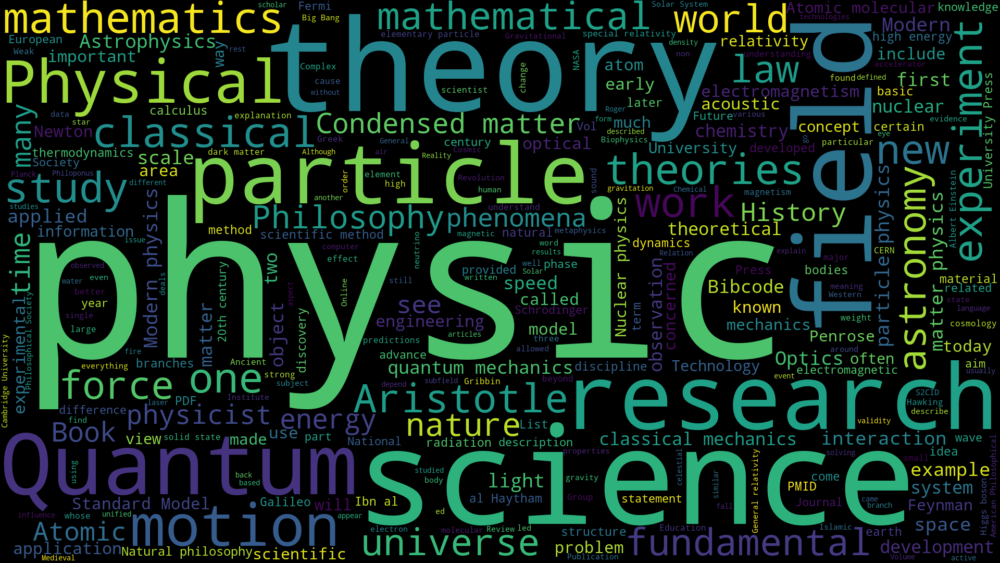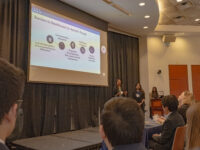Born on March 14, 1879, Albert Einstein entered a world similar to, but also irreconcilable with, the one from which he would eventually leave. His birthplace, Ulm, had recently entered the German Empire following decades of petty territorial conflict and an optimistic peace had settled over the region.
From an early age, Einstein pondered the nature of the universe, becoming lost in the invisible pull experienced by the needle of his father’s compass, and nevertheless dissatisfied by the electrical engineer’s best efforts to explain this pull’s origin. Entering school at the age of six, however, he quickly found formal education to be anathema.
“From an early age, Einstein pondered the nature of the universe, becoming lost in the invisible pull experienced by the needle of his father’s compass, and nevertheless dissatisfied by the electrical engineer’s best efforts to explain this pull’s origin.”
While the young boy excelled in matters of creativity, writing small hymns as young as six, and was prodigious in mathematics, mastering geometry and calculus before the age of fourteen, his burgeoning genius went unappreciated by the Bavarian school system, which valued rote memorization of classical literature and languages above all else.
Making matters worse was the social inequality Einstein grew to abhor. Being devoutly Jewish in the majority-Catholic German state, his family faced ostracism and hence took to general reclusion. Although accepted at first by his peers, compulsory religious education soon taught them the skepticism toward the Jewish faith expected of all well-educated Germans.
Einstein was nevertheless happy drifting through school. That is, until his family left him alone with his childhood innocence. Following a series of failed business ventures, his parents relocated to Milan, Italy in search of better opportunities which sadly would not come. Einstein, meanwhile, was left to complete his studies in Bavaria.
The adolescent could see the writing on the wall: his family could not support him forever and he had to become self-sufficient, sooner rather than later. And so, desperate to fulfill this silent edict, he applied for matriculation to the more prestigious Polytechnic Academy at Zurich in lieu of graduating from his secondary school, the Luitpold Gymnasium.
The entrance exams were a disaster. Being out of practice on account of his parents’ relocation and generally disinterested in the liberal arts, Einstein failed out and was forced to return to secondary school. Completing his compulsory education and attaining his matriculation certificate, Einstein was eventually admitted to Zurich Technical Academy, the center of science in the German Empire.
Einstein’s time at the academy was arguably the most influential of his life. While there, he voraciously studied — not in the classrooms and lecture halls, which he found to be as stifling as those of his old gymnasium, but in the solitude of his modest dwellings, where he consumed every monograph on physics he could find. Graduating in 1900 with a certificate to teach mathematics and physics, Einstein found few opportunities as an aloof, unconnected, Jewish foreigner, despite the acclaim of his professors.
To support himself, Einstein scraped by with temporary teaching positions. That is, until an old schoolmate recommended him to Director Fredrich Haller of the Confederate Patent-Office at Bern. In 1902, Einstein began working at the patent-office, which, though he often found it quite boring, gave him the freedom to meditate upon open problems in physics, especially light.
Prior to the turn of the century, light propagation was explained using the luminiferous aether model, which describes light as a wave moving through an invisible, omnipresent medium. Were this the case, light should have slightly different propagation velocities depending on the Earth’s relative motion to the aforementioned aether. However, experimental and cosmological observation continuously yielded identical values for the speed in all circumstances.
The year 1905 saw Albert Einstein publish four papers in the German scientific journal Annalen der Physik (Annals of Physics) which tackled this problem and others related to it. The significance of this cannot be understated, earning the year itself the moniker of Einstein’s annus mirabilis.
His first paper dismantled the theory of the luminiferous aether by explaining the photoelectric effect through light quantization. His second described Brownian motion, indirectly proving the existence of atoms. His third tackled the problem of light propagation directly by presenting the theory of special relativity, with his fourth describing its direct consequence, the principle of mass-energy equivalence, E = mc2.
Einstein’s solution to the paradox of light was incredibly straightforward: the speed of light is, in fact, the same in all inertial reference frames. The only paradox comes from the implicit assumption that the passage of time is the same for all observers. According to special relativity, it is only relative to the observer.
“Einstein’s solution to the paradox of light was incredibly straightforward: the speed of light is, in fact, the same in all inertial reference frames.”
Einstein knew, however, that his work was incomplete. After all, his theory only applied to inertial reference frames, hence the name “special” relativity, as it is a special case. What he was truly after was a universal model of physics, a “general” theory of relativity, the development of which would consume the next decade of his life.
The basis for general relativity revolves around the problem of gravity. By this point, the theory of quantum mechanics emerged as the theoretical basis for microscopic phenomena. However, no mechanism for the gravitational force had been found yet, leaving no defensible explanation for the phenomenon itself or its effect on quantum particles.
Einstein’s answer to this problem, the theory of general relativity, came in 1915, with surprisingly similar austerity to that of special relativity. Put simply, he posits that gravity is not a force at all, but a bending of space-time, whose resulting curvature affects matter in a manner quite similar to a Newtonian force, although it is in fact a fictitious force.
While undoubtedly revolutionary, and eventually becoming the basis for our current model of macroscopic physics, neither special nor general relativity were immediately accepted by the scientific community at large. The severe paradigm shifts each theory proposed aroused skepticism, not to mention the distinct lack of experimental evidence for either phenomenon at the time.
Additionally, given the political climate at the time, many scientists were dubious of “German science,” with some British journals even outright boycotting its distribution. Given the fact that Einstein himself was German-born, his ideas were slow to spread outside of central Europe until after the end of World War I.
Nevertheless, general relativity explained several astronomical mysteries, including irregularities in the orbit of Mercury and gravitational redshifting. Of particular note was gravitational lensing, or the bending of light around massive bodies, through which relativity could be objectively tested.
For light bent around the Sun, the difference in expected lensing between Newtonian and relativistic theory is a factor of two, with the latter expecting the greater deflection. Thus, with accurate enough measurements, one could empirically determine whether the universe is Newtonian or relativistic.
The problem then became how one could possibly measure the curvature of light around such a massive light source. The answer, keeping in theme with the rest of Einstein’s work, is surprisingly simple: wait for the Sun to go out. That is, take photographs of a total solar eclipse and measure the deflection of the stars near the corona.
“The answer, keeping in theme with the rest of Einstein’s work, is surprisingly simple: wait for the Sun to go out.”
The opportunity to do just this came in the form of Sir Arthur Eddington, Secretary of the Royal Astronomical Society, who was among the first British scientists to be persuaded by Einstein’s papers, going so far as to translate and explain them for his colleagues.
Eddington spearheaded two concurrent expeditions on behalf of the Royal Society of London to the island of Príncipe, in the Gulf of Guinea, and Sobral, a town in Brazil, in anticipation of the total solar eclipse expected on May 29, 1919. The results favored Einstein’s theory over Newton’s, a fact soon corroborated by subsequent expeditions and independent experiments.
And so, in the span of two decades, physics was irrevocably changed by Albert Einstein, one man who dared to apply Occam’s razor to the universe itself.
- Historical Studies in the Physical and Biological Sciences (1986). DOI: 10.2307/27757561
- Historical Studies in the Physical Sciences (1980). DOI: 10.2307/27757471
- The Meaning of Relativity (1921). ISBN: 9780691023526
- Relativity: The Special and General Theory (1920). ISBN: 9781587340925






